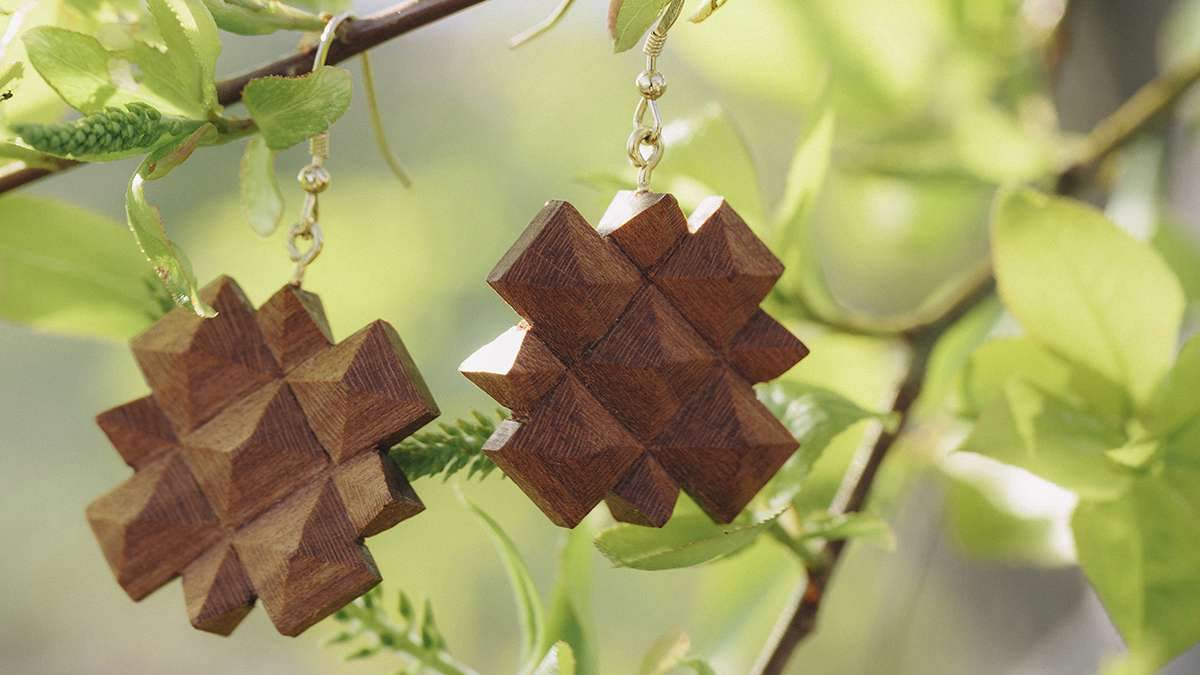free
Description

I am a traditional wood carving craftsman in Shiga prefecture, and I usually make Buddhist altars.
With the recent decline in demand, we have developed hand-carved earrings by applying the technology cultivated in making Buddhist altars.
In order to show various expressions depending on the place to cut out and the angle of carving even the same tree, while determining the characteristics of the tree, the image of Lake Biwa showing a completely different expression depending on the season, time, place and angle is superimposed. I made "Biwako no Shizuku".
Please enjoy the unique wood earrings, whose color changes and becomes more delicious as time goes by.
Information
| Manufacturer | kiki |
|---|---|
| Country of origin | Shiga Prefecture, Japan |
| Technique | Hikone Household Buddhist Altars |
| Material | Domestic wood, 14kgf |
| Size | Wood: 1.57" * 0.59" * 0.39"(木の部分:4.0*1.5*1.0cm) |
| Weight | 0.04 lbs(20g) |
| Capacity | 0 oz(ml) |
| Electronic Equipment | |
| Note | The metal parts of the pierced earrings use "14kgf", which is less likely to cause allergies. |
| Delivery Time | 1-2 weeks (if out of stock + 1-2 weeks) |
Brand history and characteristics
How Japanese Products Can Be Such High Quality
Payment & Security
Your payment information is processed securely. We do not store credit card details nor have access to your credit card information.
![[ACCESSORY] LAKE BIWA (PIERCED EARRINGS) | KIKI | HIKONE HOUSEHOLD BUDDHIST ALTARS](http://en.thebecos.com/cdn/shop/products/kiki_biwako_02_640x640_1_699d8d9f-9183-447a-9f7a-850ef1051859_{width}x.jpg?v=1602623102)
![[ACCESSORY] LAKE BIWA (PIERCED EARRINGS) | KIKI | HIKONE HOUSEHOLD BUDDHIST ALTARS](http://en.thebecos.com/cdn/shop/products/kikibiwa_0002_kiki_biwako_01_f8ce1caa-2129-4ebb-98f9-34699c82b64c_{width}x.jpg?v=1602623106)
![[ACCESSORY] LAKE BIWA (PIERCED EARRINGS) | KIKI | HIKONE HOUSEHOLD BUDDHIST ALTARS](http://en.thebecos.com/cdn/shop/products/kikibiwa_0001_kiki_a-02_p_180420_87808664-7bdc-4731-835e-87ecb9eb9ec4_{width}x.jpg?v=1602623110)
![[ACCESSORY] LAKE BIWA (PIERCED EARRINGS) | KIKI | HIKONE HOUSEHOLD BUDDHIST ALTARS](http://en.thebecos.com/cdn/shop/products/kikibiwa_0000_kiki_a-02_m_180420_9b57bbff-88ba-46d3-b3fd-c70f255cdcad_{width}x.jpg?v=1602623114)
![[ACCESSORY] LAKE BIWA (PIERCED EARRINGS) | KIKI | HIKONE HOUSEHOLD BUDDHIST ALTARS](http://en.thebecos.com/cdn/shop/products/kiki_biwako_02_640x640_1_699d8d9f-9183-447a-9f7a-850ef1051859_130x.jpg?v=1602623102)
![[ACCESSORY] LAKE BIWA (PIERCED EARRINGS) | KIKI | HIKONE HOUSEHOLD BUDDHIST ALTARS](http://en.thebecos.com/cdn/shop/products/kikibiwa_0002_kiki_biwako_01_f8ce1caa-2129-4ebb-98f9-34699c82b64c_130x.jpg?v=1602623106)
![[ACCESSORY] LAKE BIWA (PIERCED EARRINGS) | KIKI | HIKONE HOUSEHOLD BUDDHIST ALTARS](http://en.thebecos.com/cdn/shop/products/kikibiwa_0001_kiki_a-02_p_180420_87808664-7bdc-4731-835e-87ecb9eb9ec4_130x.jpg?v=1602623110)
![[ACCESSORY] LAKE BIWA (PIERCED EARRINGS) | KIKI | HIKONE HOUSEHOLD BUDDHIST ALTARS](http://en.thebecos.com/cdn/shop/products/kikibiwa_0000_kiki_a-02_m_180420_9b57bbff-88ba-46d3-b3fd-c70f255cdcad_130x.jpg?v=1602623114)

